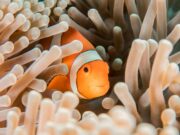Most Caribbean coral reefs may disappear within 20 years, if something isn't done, a new report warns - but for once global warming is not to blame.
Over 42,000 turtles are legally killed each year, 80% of them endangered green turtles (Chelonia mydas), a study suggests.
British scientists investigated which countries allowed turtles to be killed, and how many of each species died, the Diversity and Distributions...
What makes the Cuttlefish so good at controlling its colour and blending in with its surroundings? This month scientists at Harvard University and the Woods Hole Marine Biological Laboratory have helped answer that question.
It has been long known that...
Shark feeding dives are increasing, yet are controversial. Shark tourism has great economic benefits, and can help shark conservation. What are the drawbacks?
The massive Conger Eel grows to almost 3 m (10 ft) long, the females often being bigger than the males. At night they hunt fish and crustaceans like crabs and lobsters. In spite of this divers often see crustaceans sharing a hole with a conger. Congers breed only once in their lives, at between 5 and 15 years of age. They migrate to deep water to spawn – some sources say as deep as 4000 m.
Warming seas around the world are threatening corals. But scientists from the Hebrew University of Jerusalem and Bar-Ilan University have noticed that corals in Eilat, at the North of the Red Sea, remain healthy even when exposed to higher...
The rare giant mussel, Pinna nobilis, is found only in the Mediterranean Sea. It is one of the largest bivalves in the world, growing to 120 cm long. The mussels can live for as long as 20 years. It...
Scientists have long believed soft corals, one of the many endangered elements of marine life, are only minor contributors to the structure of coral reefs. But that's not true, says new research from Tel Aviv University.
A new in-depth analysis...
Researchers have found that fish have developed their own mosquito nets in order to get a good night's sleep.




























